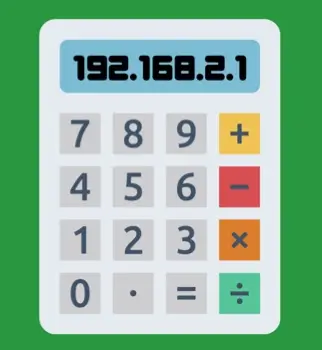What's the purpose of a subnet calculator?
Every subnet receives an IP address that represents it on the Internet. Therefore, the address acts as a unique identifier and aim to achieve a fast, efficient, and stable network. It helps administrators who would typically need to calculate different parameters, such as how many subnetworks a network needs and how many web hosts it requires. A subnetwork calculator simplifies the process of segmenting a network, and anyone can find the total number of subnetworks for a given network address quickly and easily.
Essentially, a subnet calculator facilitates IPv6 and IPv4 subnetting, therefore making the process simpler and faster. It helps organizations boost network performance.
How does the IP subnet calculator work?
In IP address space, there are different classes of major networks. Of them, classes A, B, and C are commonly used for commercial purposes. Each class has a range of valid IP address.
The subnetwork calculator then performs network calculations using an IPv4 or IPv6 address, IP range, network class, subnetwork mask, mask bits, and more. It takes an IP address as input before providing various subnetting parameters as an output. For example, consider a network with the IP 192.168.0.1 and the subnet mask 255.255.255.0. The calculator computes the following:
- the network address, 192.168.0.0
- the broadcast address, 192.168.0.255
- the number of host addresses, 254
- the range of host addresses, 192.168.0.1 to 192.168.0.254
Subnet calculators tell you the number of possible subnets within a network and information about each. This is useful when designing any new network layouts.

To use the subnet calculator, simply enter your IP address, set your parameters, and hit Calculate.
Why use a subnetwork calculator?
A subnet mask calculator is a valuable tool not only for network administrators but also for IT professionals and anyone who needs to plan and design complex networks. Its benefits include:
- Accurate subnetting. Calculating subnets for your network manually can result in routing problems. Therefore, a subnet calculator makes the process efficient and reduces the risk of errors.
- Ease of use. The tool doesn't require a lot of technical knowledge, making it usable for people of all levels of experience.
- It saves time. Dividing networks into sections is lengthy, especially when your network grows. A subnet calculator saves time by quickly calculating subnetting parameters and ultimately reducing manual workload.
- It offers flexibility. The ability to handle a range of subnetworking scenarios makes the calculator useful in different network environments. You can also use it for a variety of network tasks.
- Ability to plan and design. A calculator displays information about subnetworks, including IP classes, number of hosts, and broadcast address. This helps optimize extensive networks for performance.
- Easy troubleshooting. The calculator returns detailed information about IP addresses and subnets, which then helps with network troubleshooting. Any issues identified can be quickly resolved.
Frequently asked questions
Which calculator is used for classful and classless supernetting?
For classful supernetting, use an IP supernet calculator. For classless supernetting, use a CIDR calculator, which then provides results dealing with Classless Inter-domain Routing (CIDR) notation.
Who uses a subnet calculator?
Network administrators, IT professionals, and coders have used this tool for years to obtain network subnet information. By subnetting, they're able to manage their network infrastructure quickly and easily.